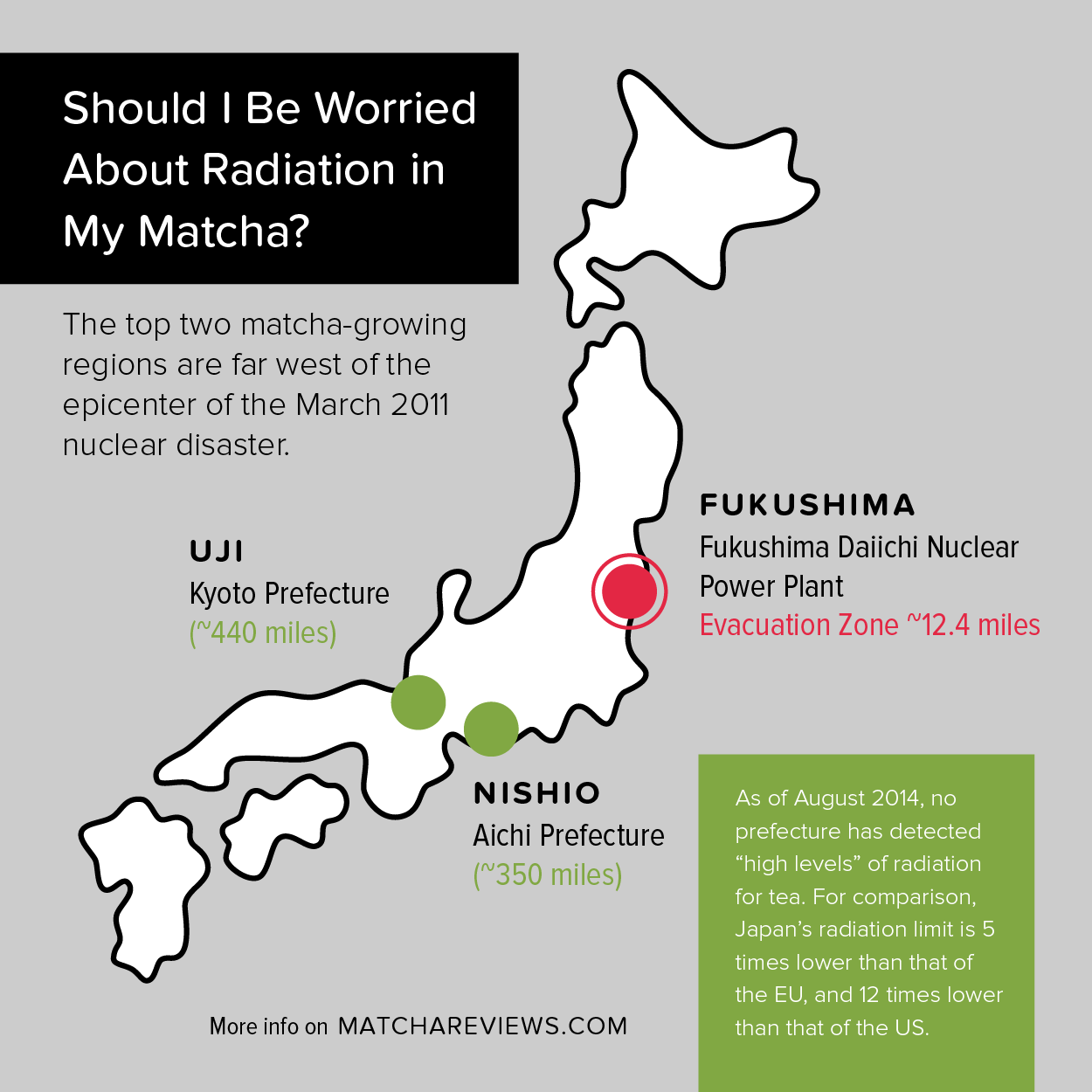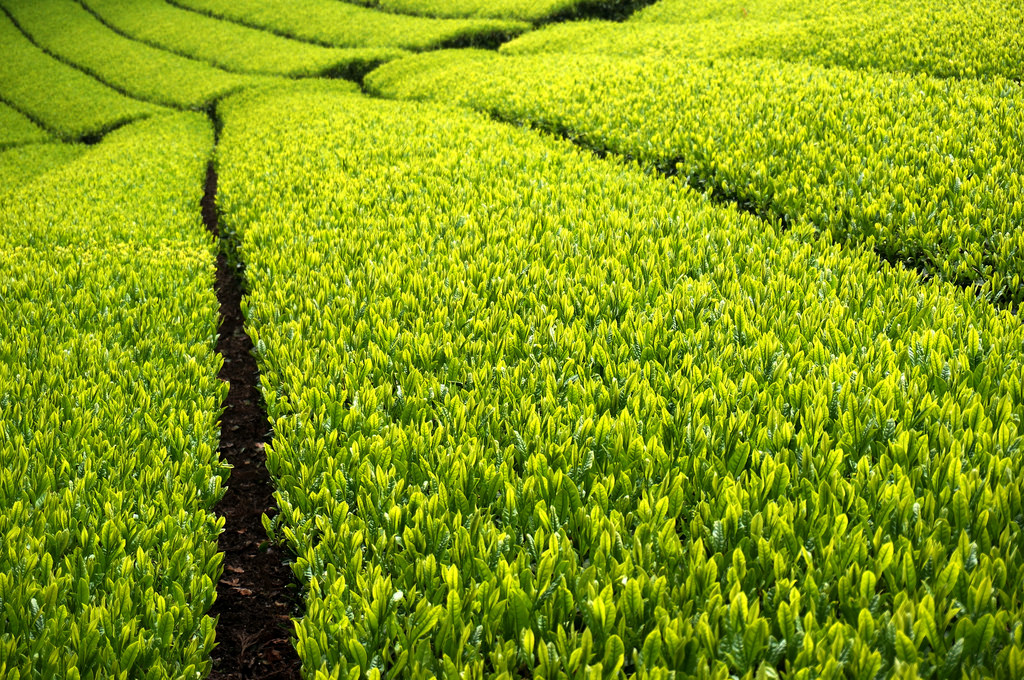Several readers have asked, “Should I be concerned about radiation in my matcha from Japan? Where is the furthest place from the nuclear meltdown in Japan where matcha is grown?”
Most of the matcha in Japan is grown far west from the Fukushima area, where the 2011 disaster occurred. But for those still concerned about radiation in matcha, read on.
What we know about testing of tea leaves in Japan for radiation
On March 11 2011, there was an energy accident at the Fukushima I Nuclear Power Plant, initiated by a tsunami. This caused three nuclear meltdowns and releases of radioactive materials. Since that time, the Japanese government has been testing samples of tea on a regular basis.
Following the first year of the disaster, prefectures near Fukushima recorded high levels of radiation. According to Green Tea Guide, these included Fukushima, Chiba, Gunma, Ibaraki, Shizuoka, Tochigi, Tokyo and Kanagawa. Teas from western Japan regions of Uji, Kyoto, and Kyushu Island were never found to contain radiation. This includes Kagoshima, Miyazaki, Kumamoto and Yame prefectures.
As of August 31, 2014, no prefecture has detected high levels of radiation for tea. This is saying a lot, as Japan’s radiation limits are much stricter than the rest of the world (Japan: 100 Bq, EU: 500 Bq, USA: 1200 Bq—Bq = Becquerel, a unit of measure for radiation). Additionally, radiation detected in dried leaves gets diluted to ~ 1/30 when brewed. But the radioactivity of tea is tested in dried form.

So what about radiation in matcha?
Matcha is a green tea powder made from grinding the whole tea leaves. You are consuming the whole leaves, not just brewing them like tea. This is part of what gives matcha so many more health benefits than green tea. But this means that matcha drinkers should be extra cautious when it comes to radiation.
As a general rule of thumb, you can be more confident that your matcha doesn’t have radiation the further you go from Fukushima region. Luckily, the main growing regions of matcha in Japan are Uji (Kyoto Prefecture) and Nishio (Aichi Prefecture). Both of these are far west of Fukushima.
Conclusion: Do your own research before you buy matcha
I highly encourage you to do your own research on radiation levels in matcha:
- Find out where your matcha comes from (all the matcha I review lists this). Then look it up on a map and see how far it is from Fukushima.
- Visit the website of the company selling your matcha. The best matcha shops will post their quality standards and a certification of radiation testing results.
- If you are interested in digging through the most current data on radiation in Japan, Japan’s Ministry of Health continues to post updates weekly and monthly with testing results for levels of radioactive contaminants in tea.
- Here’s an interactive map of radiation in Japan by region (this map is from April 2011, 1 month after the nuclear accident).
